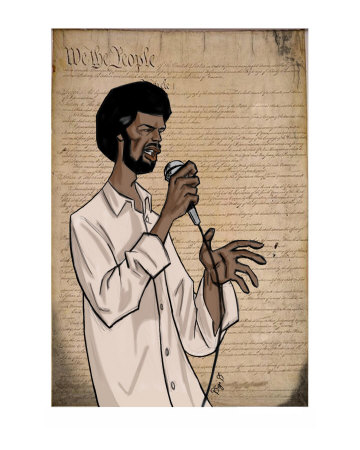What is the feeling when you're driving away from people, and they recede on the plain till you see their specks dispersing? -it's the too huge world vaulting us, and it's good-bye. But we lean forward to the next crazy venture beneath the skies.””
Jack Kerouac--my first writer who was idol.
As I said I would do in my last blog—my discussion continues. What I would like to expound upon for today is Giulio Camillo’s memory theater, and how it relates to my own memory theater.
So to start:
…I remember a few months ago purchasing The Art of Memory, skimming through it briefly, reading some of the passages and pondering what (exactly did Camillo’s centerfold mean)—and thinking to myself, that this semester was going to be a tough one. And I suppose it has—but has it really been in the traditional sense of what a contemporary college student equates with hard. I start with this example: cramming for a test—I am sure every college student knows what I am talking about. We all have been fortified in that sick mindset of fluorescent light twittering on and off above our head, sipping stale coffee repeating like mad a few irrelevant concepts, for a class you hate…and there a few hours later in a drawn out solitude at 11:45 the librarian’s snaps you out of that edge of insanity reminding you that things close, and your bed is always a welcome place. Godamnit I hate that shit...So In a sense you might say, I was delightfully surprised to discover that the artificial memory was in fact aesthetic—not a compulsory technique in the typical way we remember irrevelent college drool—but an engaging experience that is everything, and which—folds neatly into your mind.
Why I chose to continue with the muses for my theater is simple: the park, the dogs, and the smell the breeze had breaking through the park trees is poetry. If anyone can recall from the beginning of the semester, Doctor Sexson on assessing the importance of remembering the muses said: what does one really have to do on a day to day basis that is more important than remembering the nine. This stuck, and perhaps I might be a mystic, but patterns of poetry and the muses riding crests of awe!!!!!! are everywhere. Weather they are divine or not, I cannot say. I Just know, like Jack Kerouac defined “IT”, that “IT” is an unexplainable plane were we truly are and above the realm of flesh and bone. Yates in her study of Camillo says that when studying his theater and its dynamics she discovered that Camillo believed in the three worlds of the Cabalist: “the supercelestial world of the sephiroth or the divine emanations: the middle celestial world of the stars; (and) the subcelestial or elemental world.” She latter goes on to explain that in a sense this notion is Platonic, and that Camillo is using the sephiroth as eternal places of his memory. And I suppose in a sense, the muses and there explicit power to evoke are engrained in my memory as Sephiroth, or “It”. Camallio believed his organic association was constructed upon eternal truth, and I suppose this is not really what I seek as the cornerstone to my theater—or maybe it is—I do not know. But I do understand my need to use the muses as a barricade and graspable objects between myself and “IT”. Finally, in a mystic sense, the practicality of the memory theater in this occult Platonic sense to myself and Camallio is that “The theater is thus a vision of the world and of the nature of things seen from a height, from the stars themselves and even from the supercelestial founts of wisdom beyond them”.
God bless the rusted water pail
Teaming with soaked green grass nectar.
God bless the old wooden white house—
In slow years they rest
Nantucket
Were blue curled waves stand still—
in that moment of memory
Were not a shade of light breaks that silence.
God bless laying in the grass
Not a moment too soon—
When Grandma loved seagulls
And my eyes covered with the summers crimson lids.

No comments:
Post a Comment